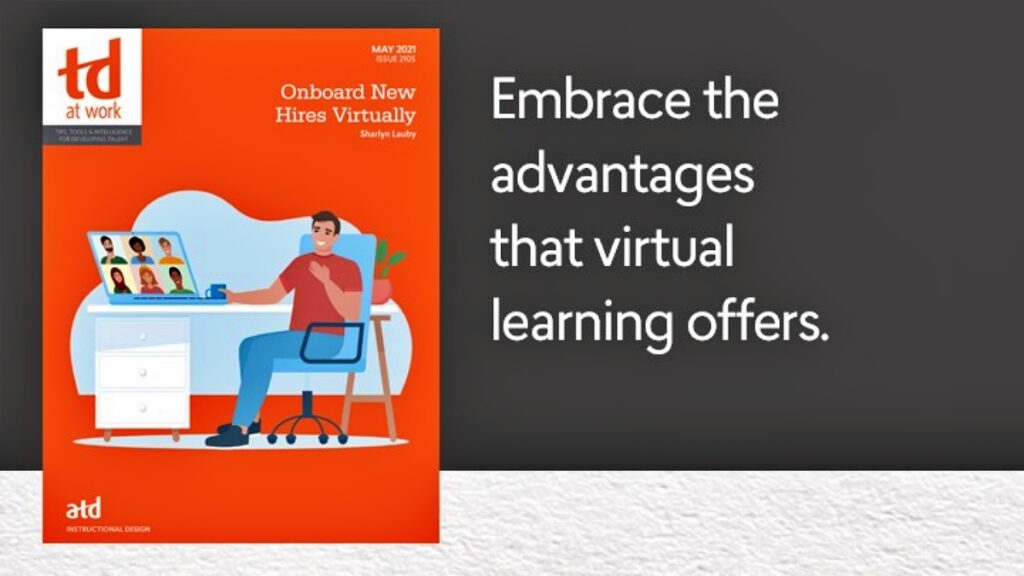Virtual Activities Have a Permanent Place in Onboarding
Estimated reading time: 4 minutes
My local newspaper recently published an article “Will virtual onboarding for new workers be the norm post-pandemic? Some experts think so.” My big takeaway from the article was that, just because we’ve started doing some virtual activities due to the pandemic, that doesn’t mean we have to stop doing those activities as we become more mobile and begin returning to the office.
I really believe this is a lesson that organizations and individuals need to consider. Over the past year or so, we’ve learned some new things. We’ve learned new ways to be effective and efficient. Those new ways of doing things should not be discarded. In fact, they should be embraced.
As an example of how not to do it, here’s an article from The Washington Post titled “Workers are putting on pants to return to the office only to be on Zoom all day.” I feel pretty comfortable saying that employees will view this as a huge waste of time and drain on productivity. There’s got to be a better way.
Which takes us back to the initial article about virtual onboarding. To be honest, I don’t know that 100% virtual onboarding makes sense. This isn’t a slam against organizations that have been doing total virtual onboarding. We’re still in a pandemic. You must do what works best. But hopefully, as organizations are making their return to the office plans, they are including some sort of mini onboarding to give employees who were hired during the pandemic an opportunity for a few in person activities.
For example, employees might start using some onsite equipment and need instruction about how to use it safely. It just makes sense to do this in person. Even on camera isn’t the best option for something like this.
However, this doesn’t mean that some of the activities that were done virtually – and done well virtually – must be discontinued. For instance, benefits enrollments via video have become very popular. Employees can participate at their convenience and listen to recordings to hear information again. They can also have family members participate, since a lot of benefits decisions are family decisions.
Onboarding can take on a whole new meaning by including a self-learning component. We want employees to be self-learners. Setting expectations early and giving employees time for self-learning could make a huge difference in employee learning and comprehension.
In addition, organizations with a multi-location workforce can use virtual onboarding activities to introduce employees to their colleagues in other places. They can work on activities virtually that will improve global collaboration and team development.
The challenge becomes taking the time to evaluate everything. If organizations spend all their time and resources simply “getting things back to pre-pandemic status”, they might miss out on creating the best.
The good news is that many organizations are using this time of year to set goals and establish budgets. Organizations might want to add a few questions to their processes: Does what we’re doing right now work well? If the answer is “yes”, is there anything we can do to make it better? If the answer is “no”, what do we need to do? Please notice I didn’t make any mention of how things used to be. Because it’s possible that the organization doesn’t need to return to the past. What they really need is to start over.
P.S. If you’re looking for a way to incorporate more virtual activities in your onboarding program, I recently partnered with the Association for Talent Development (ATD) on a TD@Work titled “Onboard New Hires Virtually”. It’s a quick read (15 pages) focused on practical solutions for virtual onboarding. It also includes a planning template to guide your process. I hope you’ll check it out.
12